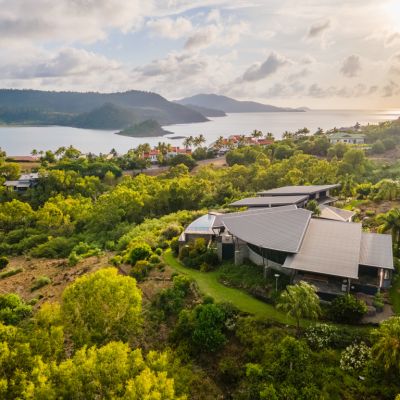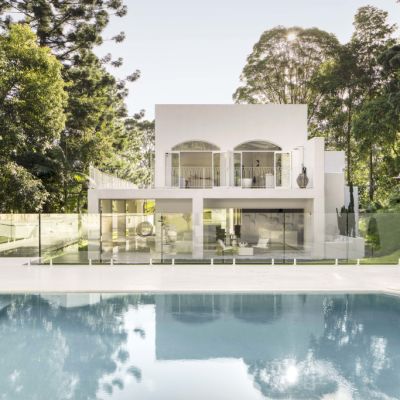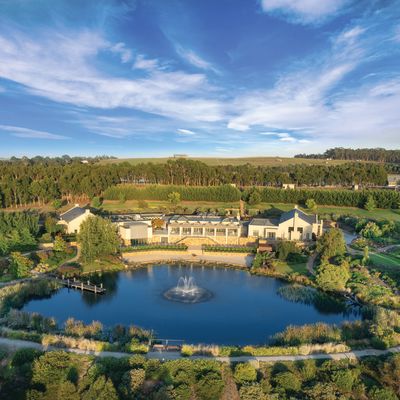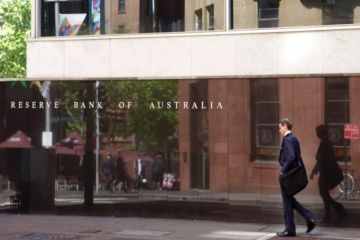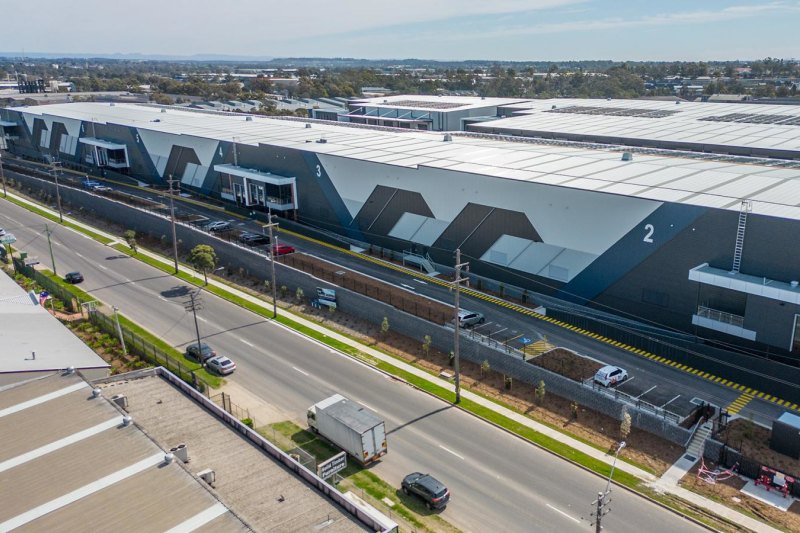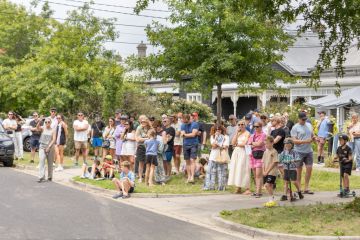Inside the Kangaroo Valley home offering a slice of Tassie in the Highlands
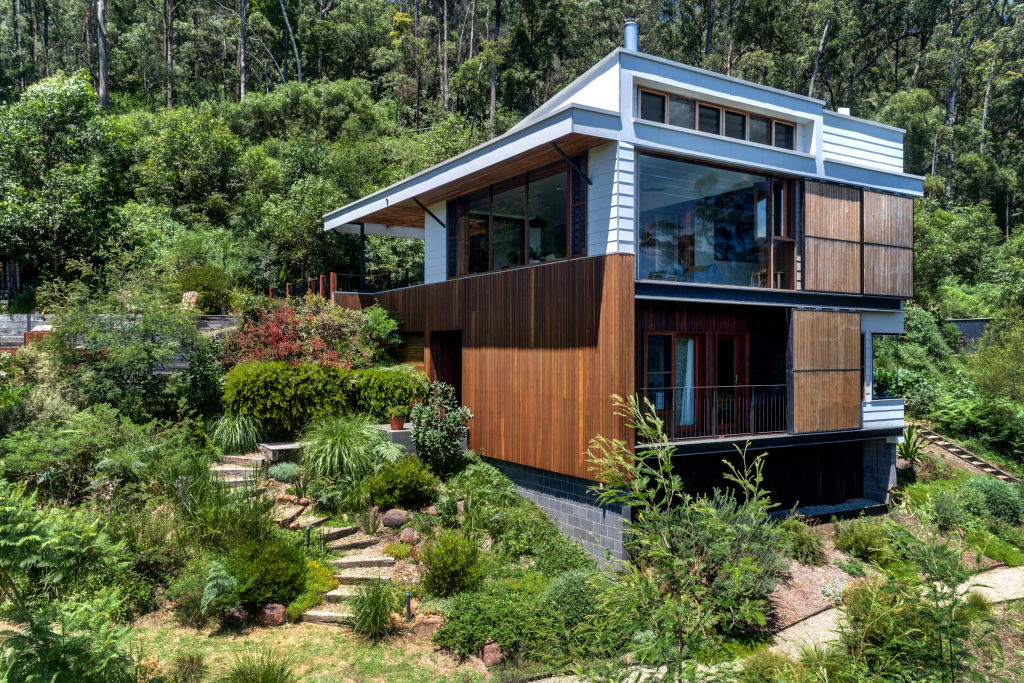
When Wesley Hindmarch decided to move to NSW in 2017 with his wife Gabrielle – originally from Sydney – and their son, he was keen to find somewhere that reminded him of the lush green rolling landscape of his home state of Tasmania.
It was never going to be Sydney. So, he looked further afield.
He liked what he saw in the Southern Highlands, eventually settling on Kangaroo Valley, a two-hour drive south of Sydney, and a township shortlisted for Business NSW’s Top Tourism Town Awards 2022 for “tiny towns” of less than 1500 residents.
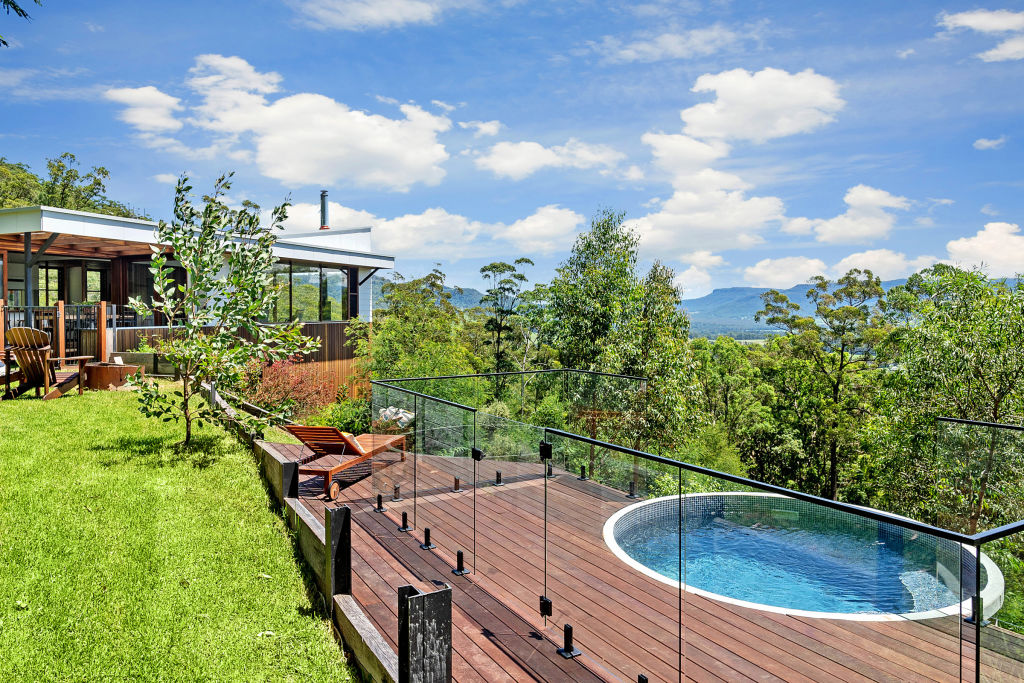
“Kangaroo Valley reminds me a lot of the country south of Hobart around Huonville,” says Hindmarch.
“It’s a well-preserved valley, with a river down the middle, because it’s in the Sydney water catchment.”
It wasn’t just about finding a place that was reminiscent of home.
As an architect, Hindmarch wanted to work on projects that were similar to those he had worked on in Tasmania.
“I understand the regional valley context,” he says.
“I know how people in the country operate, I know the lingo.”
He backed this up using local trades and materials as much as possible.
And just so there was no mistaking his community-spirited approach, Hindmarch even named his studio LocalArchitect South Coast.
Of course, there was no better project to test this all out on than his own house, this cosy two-level modern retreat he built in 2018 on an exposed elevated one-hectare bush block a small hop from town.
With panoptic views across Kangaroo Valley to Budderoo Plateau, Hindmarsh Ridge and Barrengarry Mountain, it made sense to name his property Eyrie House.
Typical architect, Hindmarch chose a challenging site.
Not only did he have to contend with a steep, tight site but also the surrounding rainforest, which included the endangered solanum, a purple flowering plant only found in treeless patches on this particular escarpment of Kangaroo Valley.
“I had to work within a small footprint so as not to disturb the rainforest setting while providing maximum amenity,” he says of the challenge.
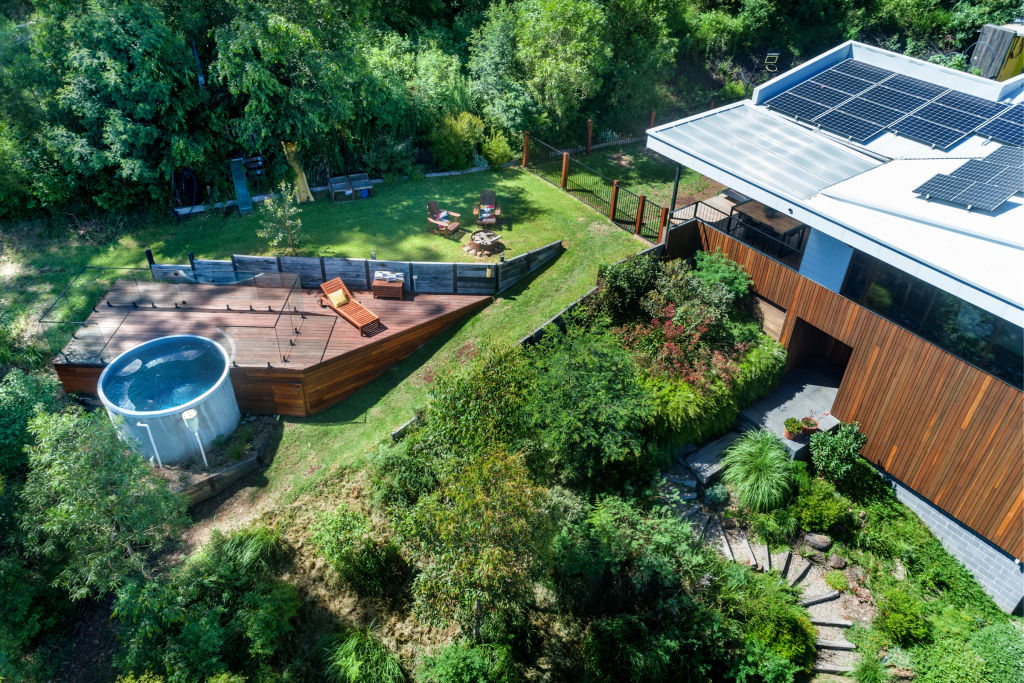
At the same time, it provided an ideal setting for the style of houses Hindmarch had designed previously in Tasmania – rustic and simplified with a modern mid-century aesthetic.
Unsurprisingly, timber – locally sourced spotted gum – figures prominently inside and out to reflect the property’s secluded rural setting.
From the outside, there’s a striking wall of vertical timber boards, complemented by sliding shutters, eaves, and door and window frames.
Inside, spotted gum is used for the floors, ceilings, doorways and staircase, as well as for joinery and a feature wall.
White is also used as a visual contrast to the timber – the walls and ceilings inside and as well as the exterior vertical cement weatherboards, for example.
“White’s neutrality highlights the beautiful timber, gives it meaning,” Hindmarch says.
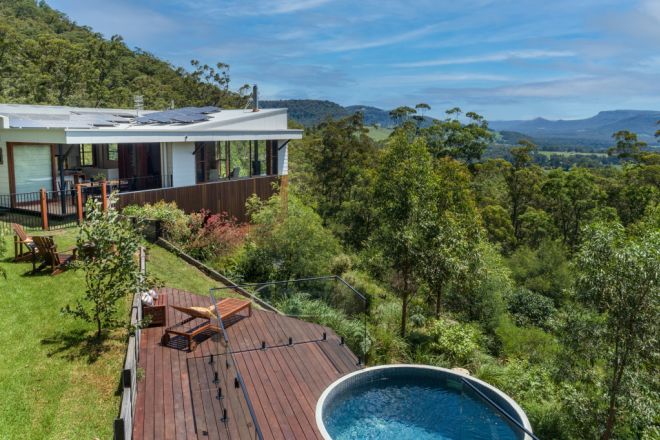
While the materiality lifts the airy, light-filled volumes inside, what really invigorates the property are the valley and escarpment views; what Hindmarch calls the “continuous show of nature”.
They breathe life into the place wherever you are, from the upstairs open-plan living and dining area, bedrooms and snug to the balcony, decks and terraces – one with plunge pool, another with fire pit – as well as the native and vegetable gardens.
“It’s all about the views,” says Raine & Horne Southern Highlands selling agent Frank Barker.
Equally, with the views, there comes a continuous show of weather.
To this end, Hindmarch has created an energy-efficient, sustainability-first house in response to its bucolic environs.
Included are insulated walls, double-glazing and louvres for cross-ventilation, deep eaves and sliding timber shutters to protect against the harsh western unTassie-like sun as well as solar panels on an angled roof and higher-than-required bush attack level construction.
Barker is selling the home with a guide of $3.25 million.
We recommend
We thought you might like
States
Capital Cities
Capital Cities - Rentals
Popular Areas
Allhomes
More
